If your website isn’t ranking the way it should, the problem might not be your content; it could be your backlinks.
Many site owners unknowingly have unnatural links pointing to their website, and these can quietly sabotage SEO efforts.
From low-quality directories to over-optimized anchor texts, these links violate Google’s guidelines and can trigger penalties or devaluation.
The worst part? You might not even realize they exist until your traffic drops or rankings slip.
In this guide, we’ll break down 15 examples of unnatural links and show you how to spot them using Ahrefs, so you can protect your site and boost your SEO safely.
Quick Summary: Unnatural Link Types (2025)
This is the TL;DR. Skim this for the short version, then dive deeper if you need.
- Think your backlinks are helping your SEO? Some might actually be hurting it. Unnatural links like paid backlinks, link swaps, PBNs, or spammy guest posts can quietly trigger Google penalties and damage your rankings.
- These links violate Google’s guidelines because they’re created to manipulate search results rather than earned naturally. Even one toxic link pattern can reduce your site’s authority and visibility.
- This guide breaks down 15 common unnatural link types from link schemes and sitewide footers to low-quality directories and over-optimized anchors so you can spot and clean them up early.
- Using tools like Ahrefs, you can detect risky backlinks by analyzing referring domains, anchor text patterns, and domain authority. Regular backlink audits help prevent ranking drops before they happen.
- The safest way to protect your SEO? Remove, disavow, or replace harmful links with high-quality, relevant backlinks that build long-term trust and visibility.
What are unnatural links?
Unnatural links are links created to manipulate a website’s ranking on search engines rather than earning it naturally.
They go against Google’s guidelines, and websites using them can face penalties that harm their visibility. Different from natural links, these links are not editorially placed or genuinely endorsed by the website owner.
In Short, Unnatural links are created to manipulate search engine rankings rather than being earned naturally. They are different from natural links, which are editorially given and genuinely endorsed.
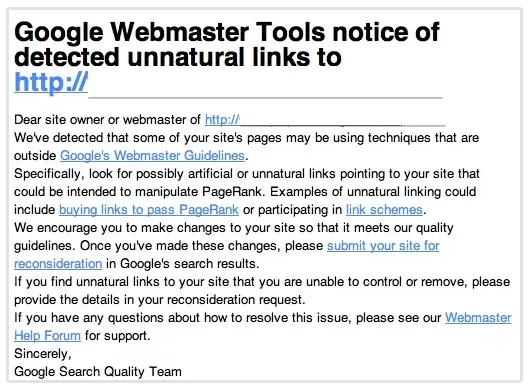
💡 Did you know?
A recent survey found that 51% of SEOs and bloggers recommend adding 2–3 internal links per blog post, while 36% suggest 3–5 internal links for optimal performance.
Examples of unnatural links include:
- Paid links, where a website pays another site for a “followed” backlink.
- Over-optimized anchor texts are designed purely for SEO.
- Hidden or low-quality links embedded in widgets, footers, or irrelevant content.
- Links from spammy directories or unrelated websites.
Google continuously updates its algorithms to detect unnatural links and prevent them from affecting search rankings.
5 Easy steps to detect unnatural links using Ahrefs
Below is a simple step-by-step approach to detecting unnatural links using Ahrefs.
Following these steps helps you identify risky backlinks and take corrective action before they hurt your SEO.
Step 1: Backlink overview
Open Ahrefs’ Site Explorer and review your domain’s backlink profile. Filter by dofollow links to see the ones affecting SEO.
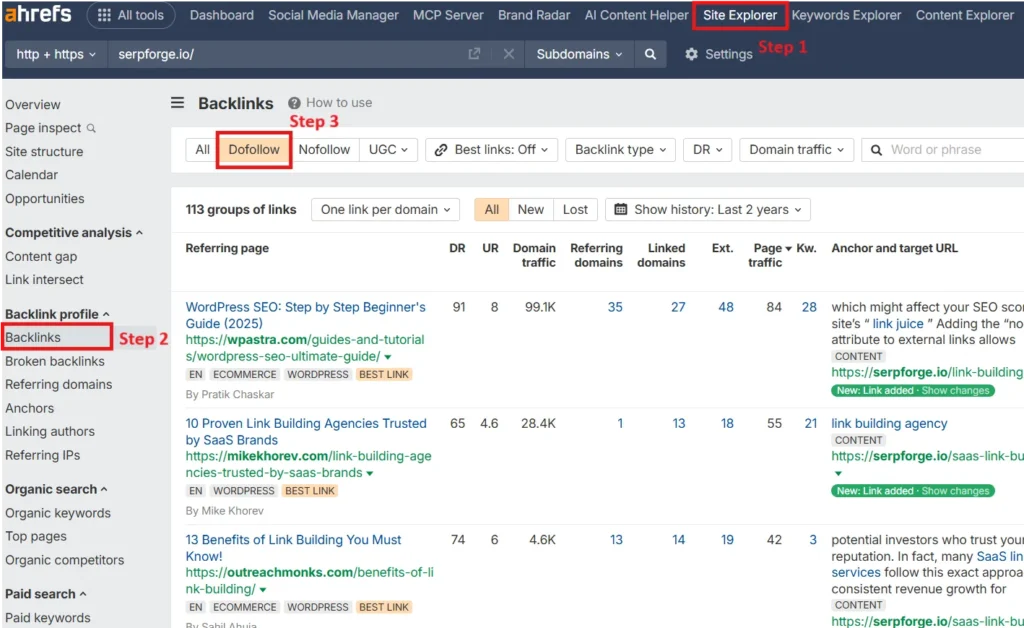
Step 2: Check domain rating (DR)
Sort backlinks by DR. A large number of links from very low DR sites (0–10) can indicate potential unnatural links.
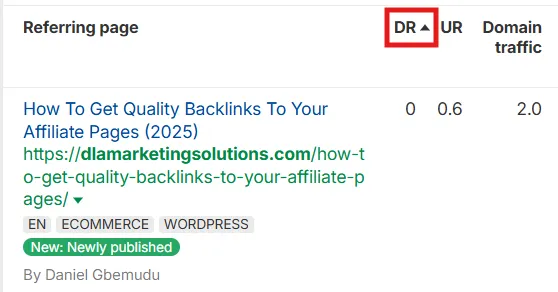
Step 3: Referring domains analysis
Go to the Referring Domains report. Identify domains linking excessively; a high concentration from a single domain may be suspicious.
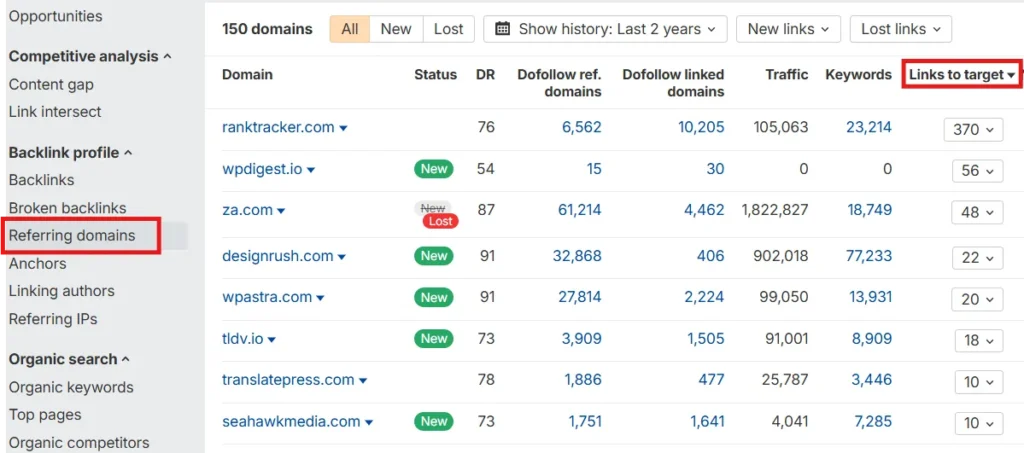
Step 4: Anchor text review
Check the Anchors report. Look for overused exact-match anchors or repeated keywords.
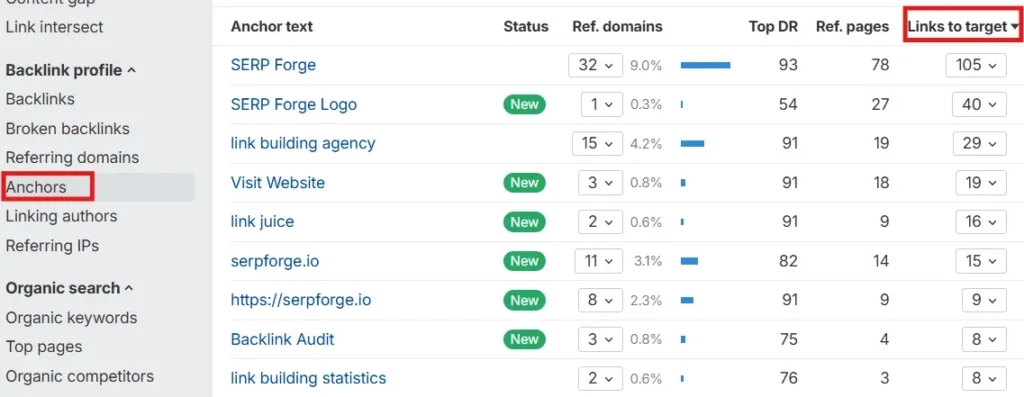
Step 5: Manual vetting
Click through to the source sites. Evaluate content quality, relevance, and site trustworthiness. Flag or disavow suspicious links.
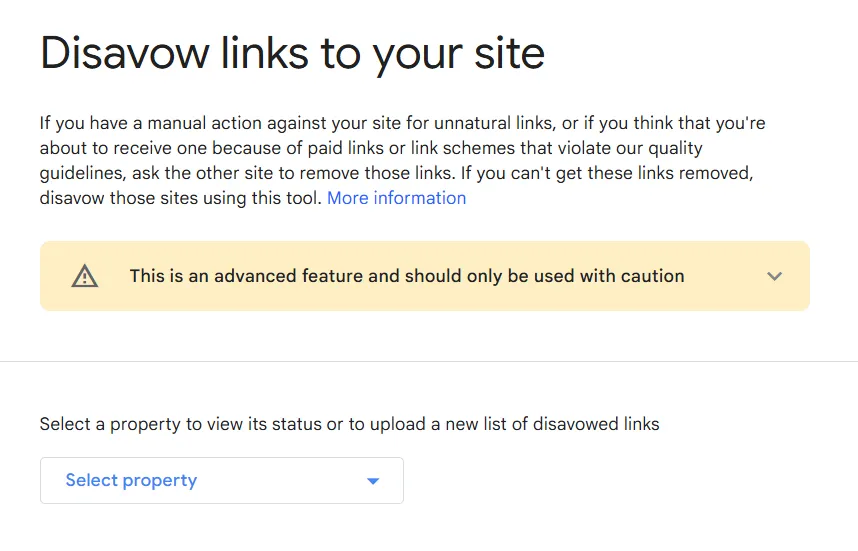
In Short: Use Ahrefs to spot risky backlinks by reviewing your backlink profile, checking domain ratings, analyzing referring domains, examining anchor texts, and manually vetting suspicious sites.
If managing this manually feels overwhelming, our link-building service can help you identify, remove, and replace unnatural links with high-quality backlinks.
Difference between natural links and unnatural links
Below is a table comparing natural links and unnatural links.
Understanding these differences helps you identify risky backlinks and maintain a healthy SEO profile.
| Aspect | Natural Links | Unnatural Links |
| Definition | A natural link is earned voluntarily when another website links to your content purely because it provides value or relevance. | Unnatural links are created with the intent to manipulate search engine rankings or boost visibility artificially. |
| How they’re gained | Occur organically without any request, payment, or incentive, purely editorial decisions. | Often acquired through link schemes, paid links, exchanges, or other incentivized means. |
| Intent | Reflects genuine endorsement and editorial appreciation of your content. | Aims to influence search rankings rather than add user value. |
| Examples | A blogger links to your article as a trusted reference. A journalist cites your brand in a news story. | Buying or selling “follow” links. Participating in link exchanges or paid guest posts. |
| Search engine view | Considered trustworthy and beneficial for improving rankings. | Violates Google’s Webmaster Guidelines and can lead to penalties or link devaluation. |
| Detection by Google | Rarely flagged, as they align with normal web behavior and editorial judgment. | Google’s algorithms use patterns and indicators (like anchor text, link velocity, and site relevance) to identify manipulative links. |
| Risk level | Low risk supports long-term SEO growth and authority building. | High risk can trigger manual actions, ranking drops, or devaluation. |
| Best practice | Focus on creating valuable, share-worthy content that attracts organic links naturally. | Avoid shortcuts like link buying, large-scale guest posting, or irrelevant link insertions. |
| SEO impact | Strengthens domain authority and improves ranking sustainably. | It may give a temporary boost, but it often results in long-term penalties or link loss. |
15 Types of unnatural links
Unnatural links come in many forms, each designed to manipulate search engine rankings rather than provide genuine value.
These links can quietly harm your SEO, often going unnoticed until traffic drops or rankings slip. Understanding the different types is key to spotting and addressing them effectively.
Below, we’ve listed 15 common unnatural link types you should watch out for.
1. Link schemes
Link schemes involve multiple websites intentionally linking to one another in a circular or organized pattern to manipulate search rankings.
These sites may appear legitimate and have traffic, but their interlinking makes the pattern obvious. For instance, three sites continuously linking among themselves are a red flag.
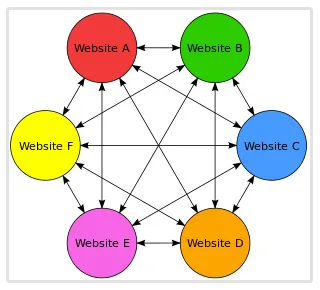
According to Ahrefs, most link builders still take this risk; nearly 74.3% admit to buying backlinks, even though such tactics clearly violate Google’s Quality Guidelines.
Such schemes violate Google’s Quality Guidelines and should be either nofollowed or removed completely.
2. Link exchanges
Link exchanges or link swaps become unnatural when done purely to boost rankings instead of adding user value.
For example, a real estate site linking to a casino or car insurance site only for SEO purposes is irrelevant.
Natural exchanges should offer genuine value to readers. Avoid excessive, forced link swapping, as Google can detect such manipulative link behavior.
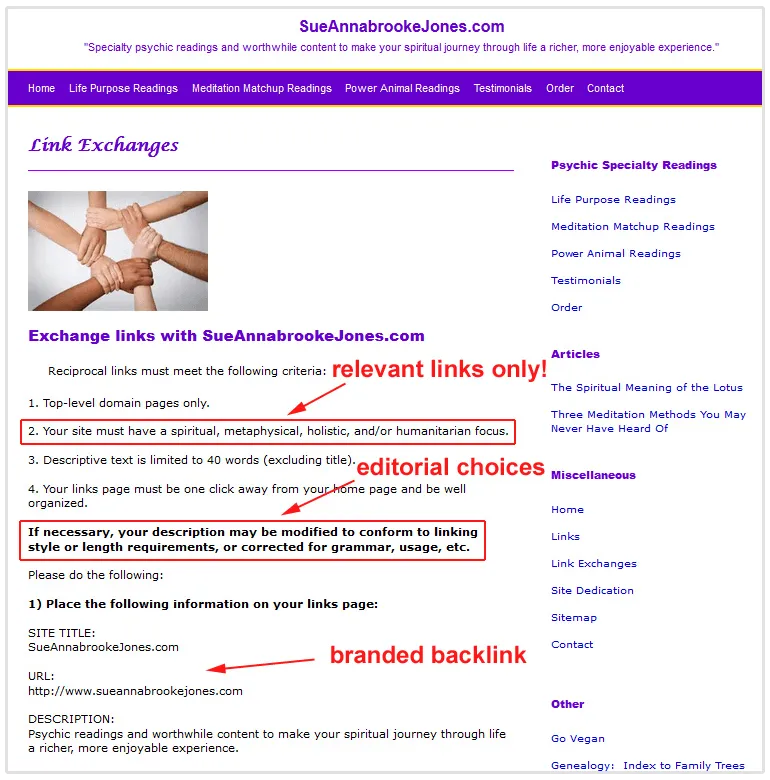
3. Injected links
Injected links are spammy backlinks automatically inserted into websites using scripts or hacked access. This often results in multiple links with identical anchor text appearing across irrelevant sites.
Did you know?
The closest authoritative source for your claim is the Sucuri SiteCheck Mid-Year 2024 Report, which states that 34.36% of infected websites were detected with SEO spam, involving common vectors like injected links, doorways, and code vulnerabilities.
In some cases, black hat SEOs exploit vulnerabilities to inject hidden backlinks. These links harm both the source and the target site’s reputation.
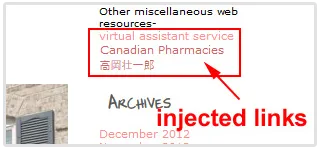
Avoid such techniques entirely and remove any suspicious, injected backlinks immediately.
4. Sitewide links
Sitewide links appear across all pages of a website, such as in sidebars or footers. They may be natural in cases like “Powered by WordPress” or an agency credit in a client’s footer.
However, buying or forcing sitewide links with keyword anchors is risky. Keep such links branded, nofollowed, and contextually relevant to prevent Google from treating them as manipulative.
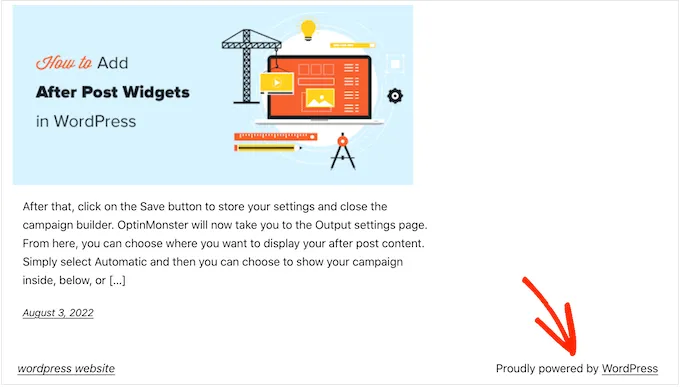
5. Low-quality directories and bookmarking sites
Not all directories are bad platforms; Yelp or Yellow Pages are valuable. Problems arise with low-quality directories that exist solely for link-building.
These outdated sites often contain irrelevant listings and spammy outbound links. For example, directories like ODP or random bookmarking sites offer no user value.
If you have such backlinks, it’s wise to remove or disavow them.
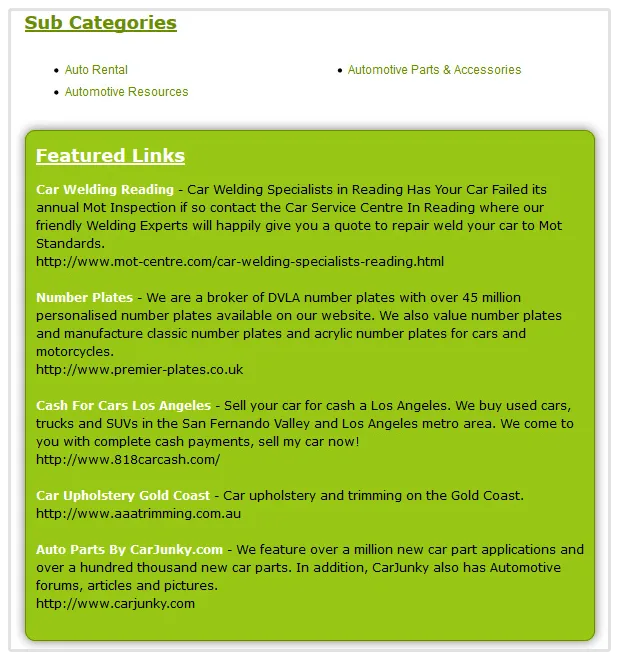
6. Over-optimized links in press releases and syndicated content
Press releases are legitimate for brand updates, but stuffing them with keyword-heavy anchors makes them unnatural.
For instance, using “best SEO agency India” repeatedly in a press release looks manipulative.
Always use branded or plain URLs instead. Google recommends marking press release links as nofollow, as overly optimized anchors in syndicated content can lead to penalties.
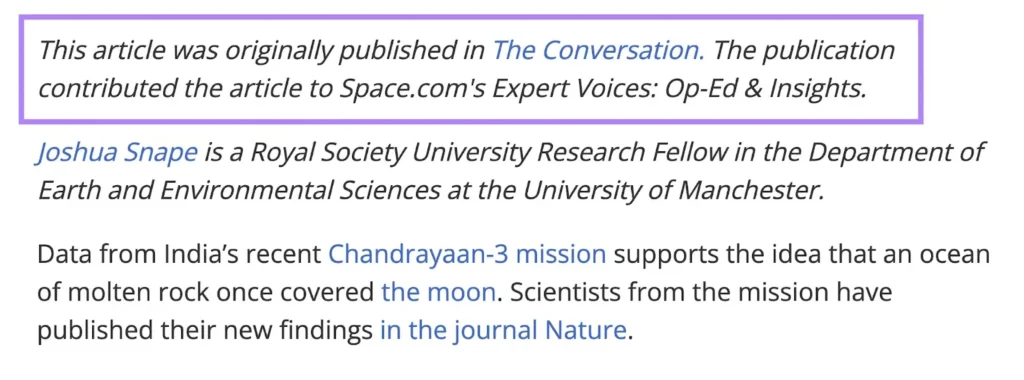
7. Paid/product exchange links on low-quality sites
Paid links or product exchanges become unnatural when used without nofollow or sponsored tags.
For example, giving free products to bloggers in return for dofollow backlinks can raise red flags. These links are often found on poor-quality websites with no editorial standards.

According to a study, around 53% were linked to paid and sponsored links. Websites using exact-match dofollow links on sponsored pages often marked with terms like “sponsored by” or “advertorial content” were found to be the most affected.
You can also focus on creating a strong linkable asset on your site that naturally attracts high-quality backlinks instead of relying on risky paid links.
To stay safe, tag such links correctly and diversify your link sources to avoid dependency.
If you want high-quality paid links for your link-building strategy that are 100% natural and relevant, we can help.
8. PBN links
Private Blog Networks (PBNs) are groups of websites created solely to insert backlinks to a target website. They often have thin content and no real traffic.
For example, a PBN site might publish spun articles linking to multiple money pages. While PBN links can give a temporary boost, they’re risky once detected, Google devalues them, and may issue penalties.
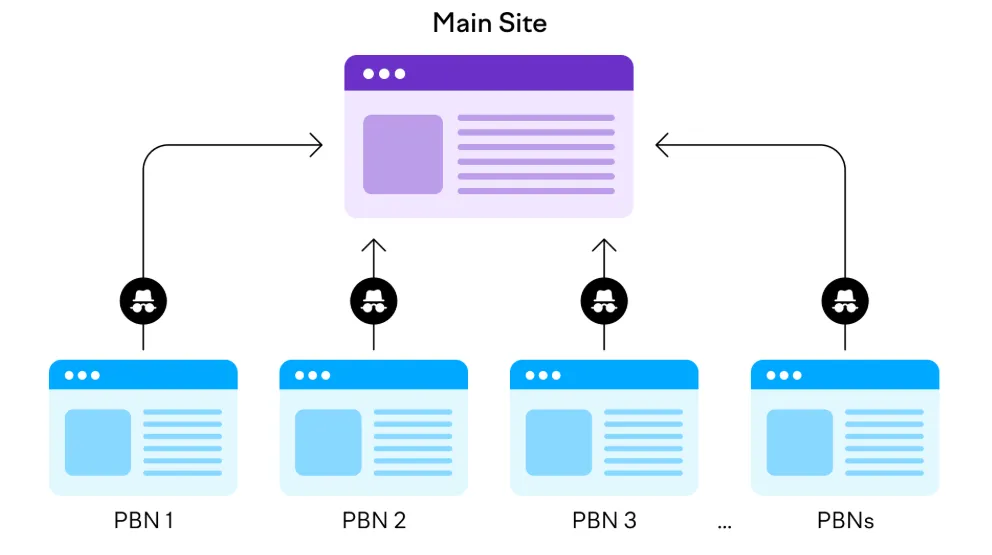
9. Comment spam
Comment spam happens when someone posts irrelevant comments with links on multiple blogs or forums.
For example, leaving “Check out my site: bestshoesonline.com” under random posts adds no value. Occasional, relevant comments are fine, but mass commenting with keyword anchors looks manipulative.
Avoid using automated comment tools, and keep links contextual and genuinely helpful to readers.
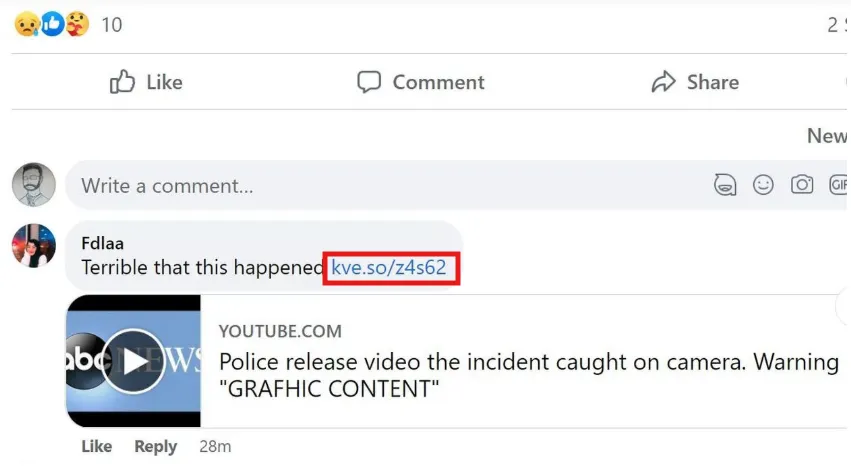
10. Spam links from blog posts & product pages
These are backlinks from poorly written or irrelevant blog posts and product pages that have no topical relation.
For instance, an SEO agency linked from a random fashion site looks suspicious.
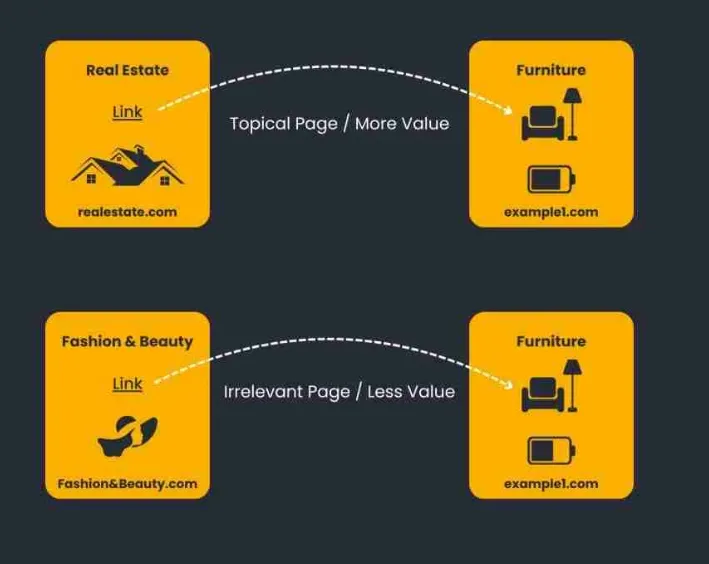
Such links are usually part of mass, low-quality campaigns. If found, focus on building high-quality contextual links instead, or disavow the spammy ones to recover ranking health.
11. Forum spam
Forum spam involves posting irrelevant promotional links on discussion boards. Automated bots often flood forums with unrelated content, such as linking to gambling or adult sites in random threads.
Genuine forum participation is fine if your link adds value. Keep anchors natural and avoid overuse of mass forum profile backlinks can easily make your link profile look manipulative.
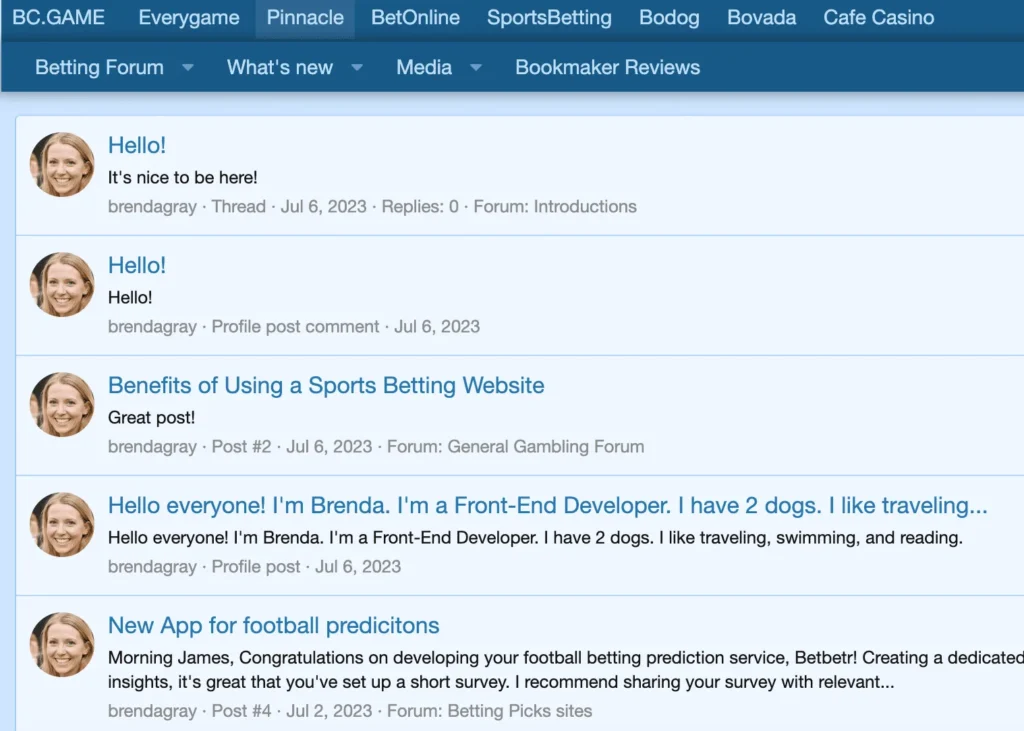
12. Spammy guest posts/sponsored posts
Guest posting becomes spammy when done at scale on low-quality or unrelated websites. For instance, an accounting firm publishing on a travel blog just to insert a backlink appears unnatural.
Google discourages this practice, especially when exact-match anchors are used purely for ranking manipulation.
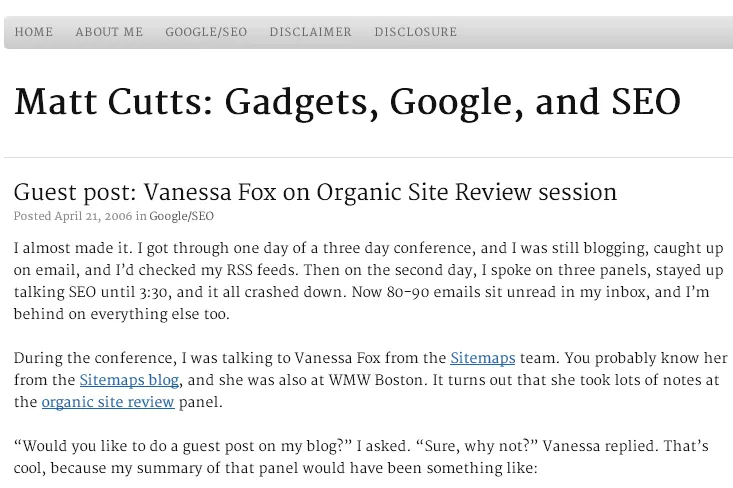
According to Ahrefs, most link builders are willing to take the risk, with 74.3% admitting to buying backlinks. This shows how common spammy guest posting has become, despite the risks.
This shows how common spammy guest posting has become, despite the risks.
Instead of spammy posts, consider using a niche edit strategy to safely acquire backlinks from existing relevant content.
To stay on the safe side, focus on high-quality, niche-relevant guest content that genuinely adds value and use natural, varied anchor texts.
To stay on the safe side, focus on high-quality, niche-relevant guest content that genuinely adds value and use natural, varied anchor texts.
13. Scaled-up web 2.0 & automated link spam
This tactic uses automation tools like SENuke or XRumer to mass-create backlinks on free blogging platforms like Blogspot or Tumblr.
These links lack control, context, and anchor diversity.
As mentioned in Google’s policies; spam refers to techniques that try to deceive users or manipulate search rankings. To appear in Google Search, content must follow Google’s spam and overall search policies.
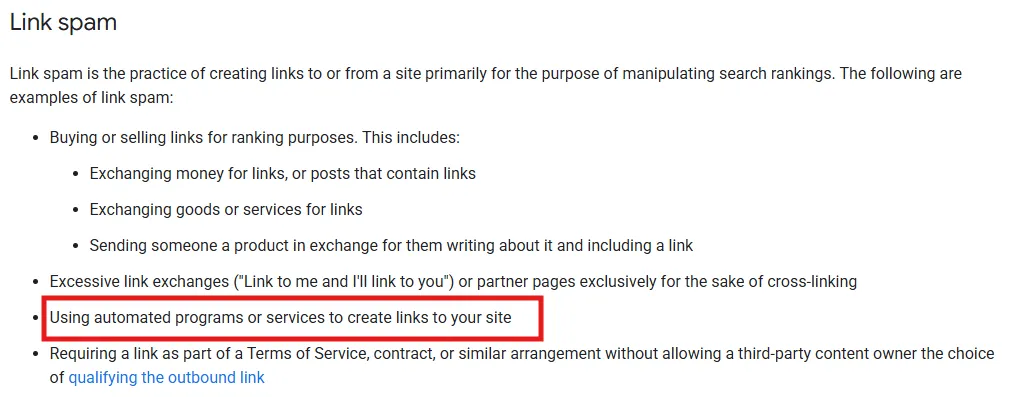
A flood of identical Web 2.0 backlinks looks artificial and can trigger penalties. Prioritize manual link-building efforts on high-quality platforms that align with your niche.
14. Widget links
Widget links are backlinks inserted into embeddable widgets like weather forecasts or calculators. The issue arises when these widgets contain keyword-rich or hidden links unrelated to the host site.
For instance, a fitness tracker widget linking to an unrelated SEO company is manipulative. To stay safe, use branded or nofollow links and ensure the widget is contextually relevant.
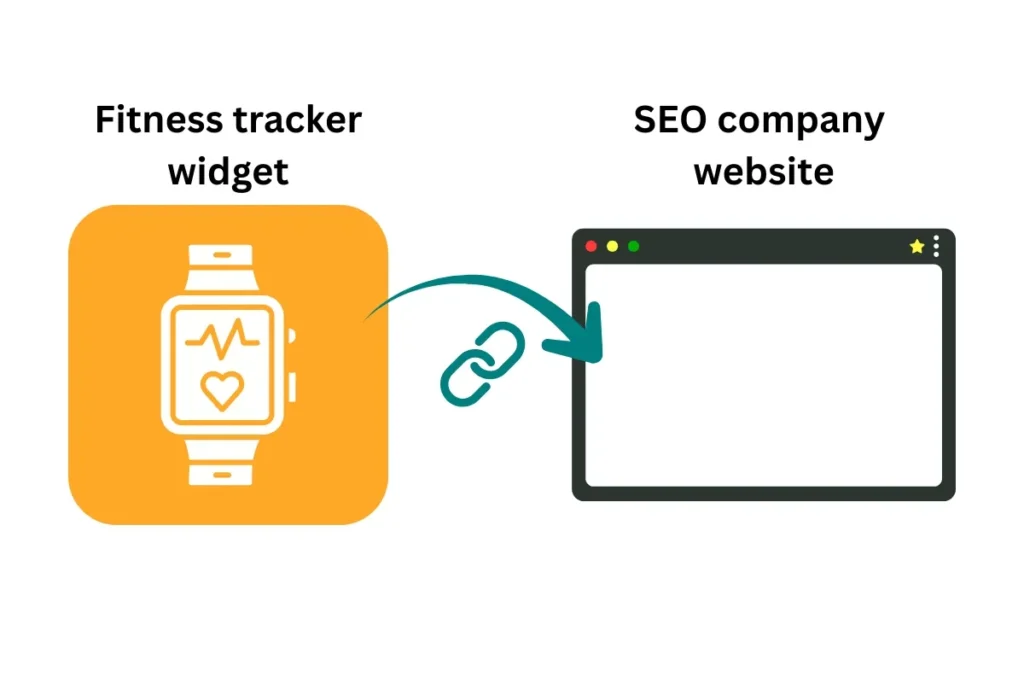
15. Redirect links / expired domains
Redirect links from expired or unrelated domains can appear unnatural if abused.
For example, redirecting multiple expired domains with unrelated histories to your main site may look like an attempt to manipulate rankings.
Always ensure logical relevance before 301 redirects, and avoid excessive redirections. If old domains carry spammy backlinks, clean or disavow them before redirecting.
When building backlinks, prioritize reputable sources that offer genuine do-follow links instead of relying on manipulative redirects or expired domains.
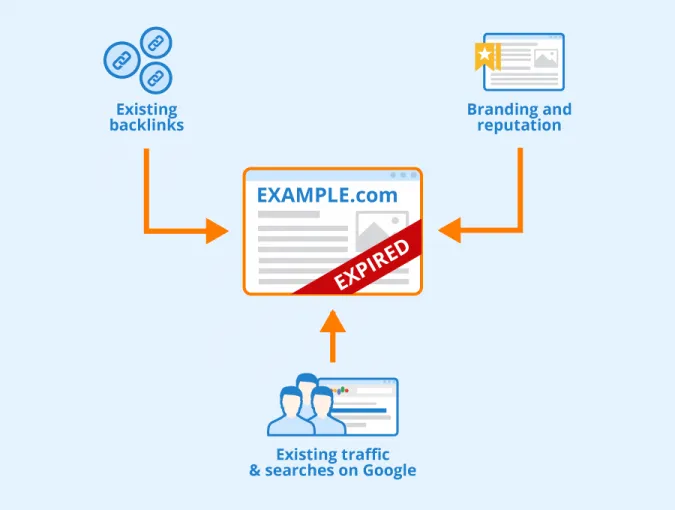
Conclusions
Unnatural links can quietly undermine all your SEO efforts, even if your content is top-notch. From hidden widgets to spammy directories, these links violate Google’s guidelines and can lead to penalties or ranking drops.
Regularly auditing your backlink profile using tools like Ahrefs, combined with manual checks, is essential to identify and address these risks.
By spotting unnatural links early and taking corrective action, whether disavowing, nofollowing, or removing them, you can protect your site’s authority, maintain search visibility, and ensure your SEO strategy delivers sustainable, long-term results.
If you want expert help in building a clean, high-quality backlink profile that boosts your rankings safely, contact us for our expert team here and get started today.
FAQs about Unnatural Links
What exactly makes a link “unnatural”?
An unnatural link is created primarily to manipulate search engine rankings rather than provide genuine value to users. It often violates Google’s guidelines and can include paid links, over-optimized anchors, or links from irrelevant sites.
How can I tell if my website has unnatural links?
You can audit your backlinks using tools like Ahrefs to check referring domains, anchor text patterns, and domain authority. Manual review of suspicious links is also essential to detect hidden or low-quality backlinks.
Are all low-quality backlinks harmful?
Not always. Occasional low-quality links may not hurt rankings, but a high concentration of spammy or irrelevant links can trigger penalties or devaluation, making it crucial to monitor your backlink profile regularly.
Can unnatural links improve my SEO temporarily?
Some unnatural links may give a short-term boost in rankings, but the risk of Google penalties or long-term ranking drops outweighs any temporary benefits. Sustainable SEO comes from natural, high-quality backlinks.
How do I remove or fix unnatural links?
You can reach out to site owners to remove the links, use nofollow tags, or disavow harmful links in Google Search Console to ensure they don’t negatively impact your SEO.
Is it necessary to hire experts to manage backlinks?
While manual monitoring is possible, hiring a link-building expert ensures a clean, high-quality backlink profile, minimizes SEO risks, and helps scale authority-building efforts safely.




